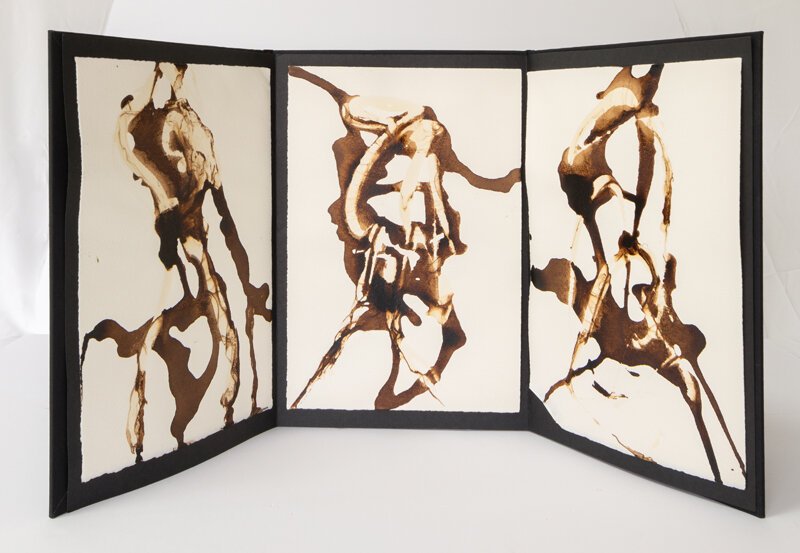The Genesis of a Book
Who can say what makes an artist want to turn a group of drawings into a book, particularly when those drawings were done fifteen years ago and seem to be unrelated to any of the paintings and drawings she's ever done, ever? I'll try to answer that question by going back in time to the terrifying images that came out of the Iraq War. I was horrified by what happened at Abu Ghraib. I responded with a group of drawings in walnut ink and mucilage, through which I sought to understand the human body in pain. In all, there were forty drawings, and I found in making them, as the ink and glue flowed, that the pain I sought to convey dispersed into forms that were more graceful than tortured. They reminded me of dancers. Other people have seen skeletons or insects.
The fullness of the living earth embraces humanity, and drawings of human figures have been part of my artistic practice from the beginning. Books have been part of my life since I first learned to read. Using drawings as a basis for books isn't new for me, but it's a pursuit that's picking up speed. No sooner had I finished the Blue Marble book, Is There Something We Can Do, than I began plotting what the next book would be, and the next. But for now, let's stay with The Mystery.
I'd always referred to the walnut ink drawings as meditations, so It was clear to me that I wanted to present them as a tableau in triptych form. The medieval spirituality inherent in that form led me to consider in depth the alchemical forces in the human mind that transmute pain and suffering into a state of grace. There's more there than wishful thinking. And because I believe all books benefit from text as well as images, I've used free verse to examine that alchemy. Printed on the back side of the triptych, the poem examines the familiar mysteries of creation, preservation, and destruction, and conjoins them with the further mystery of the hidden nature of the source of life and the final revelation that takes place when the nature of the mysteries is revealed.
It's a tall order, you may say, and this book would not be happening without the input of Richard Reitz Smith, whose ability to visualize drawings and text as an object that you can hold in your hand, have been part of the process throughout this year. Chris Merchant, a Fellow at the Center for Furniture Craftsmanship in Rockport, is hand crafting the walnut cases that house the book. I'm also grateful to the people who've given me feedback on the text and the presentation of The Mystery of Five, and to Paula at Etsy's Eclectic Selected, who helped me find the skeleton keys that unlock the mysteries.
Learn more about the Mystery of Five, the Blue Marble book and A Butterfly Careless.
